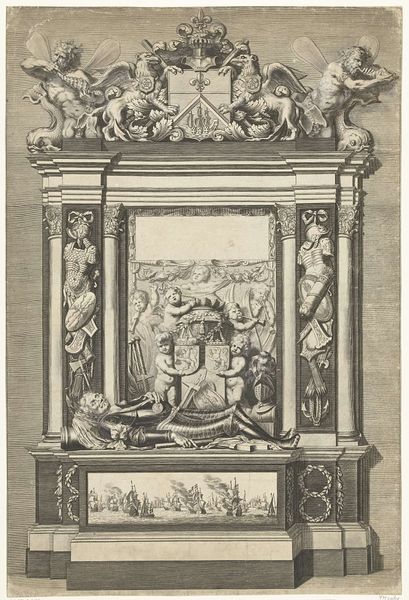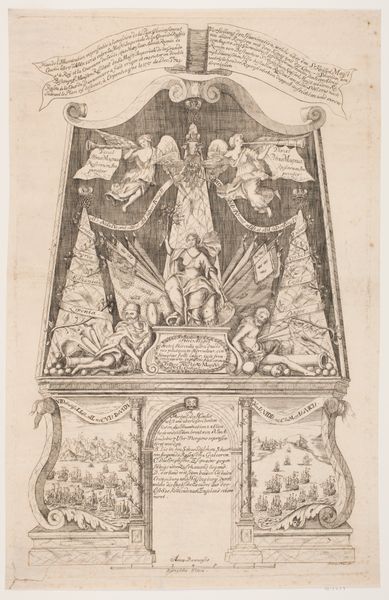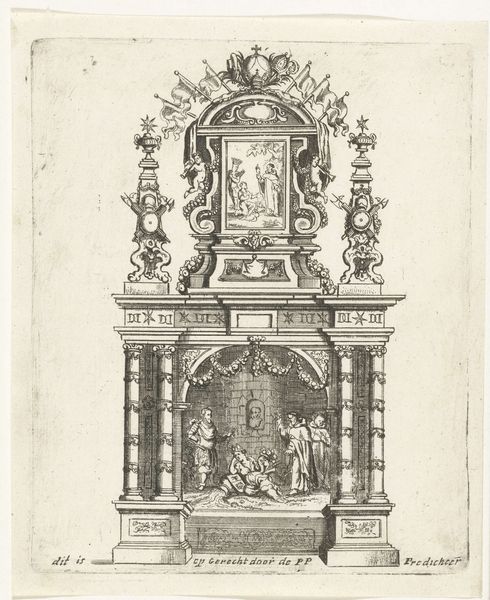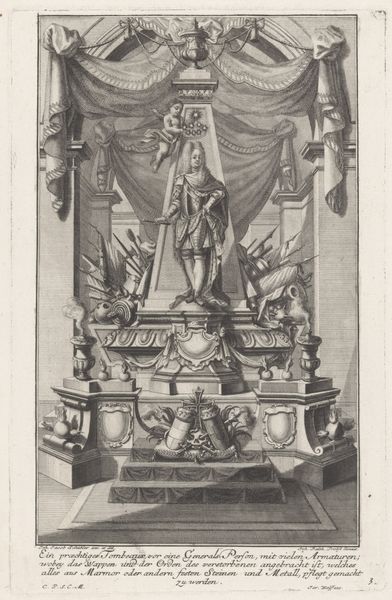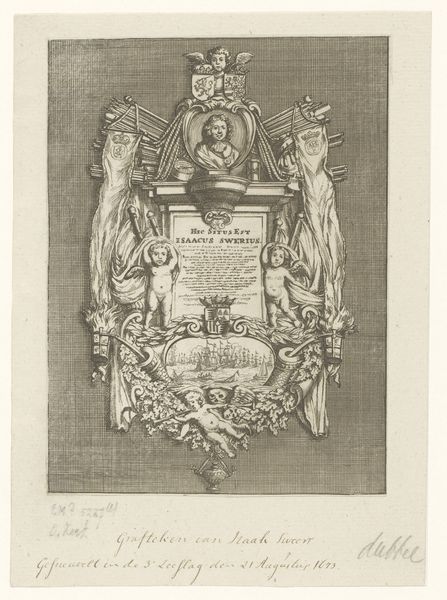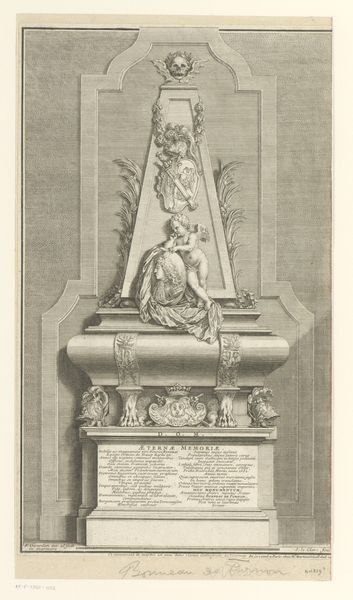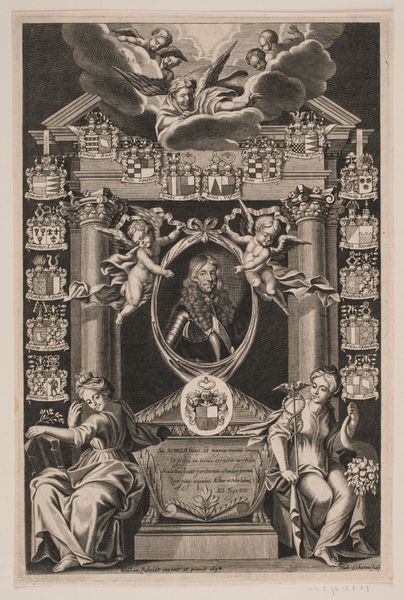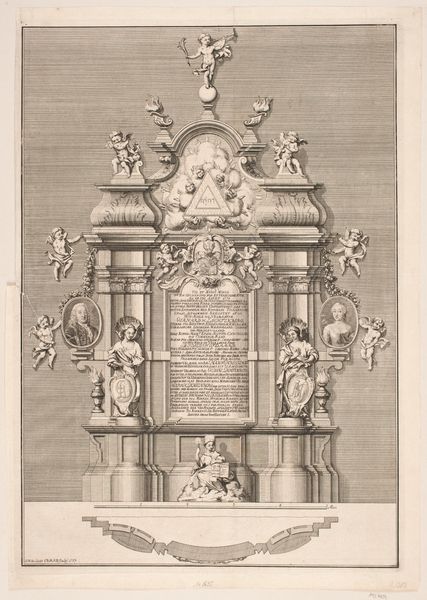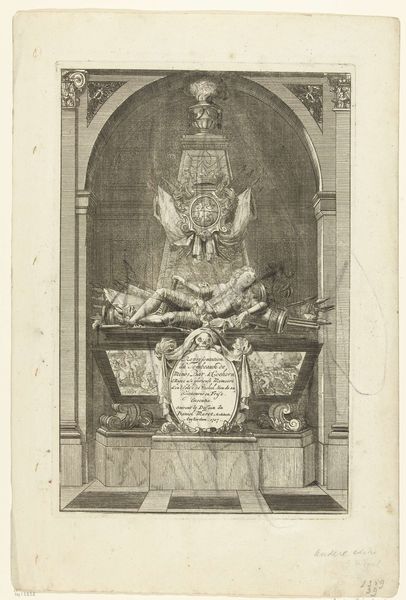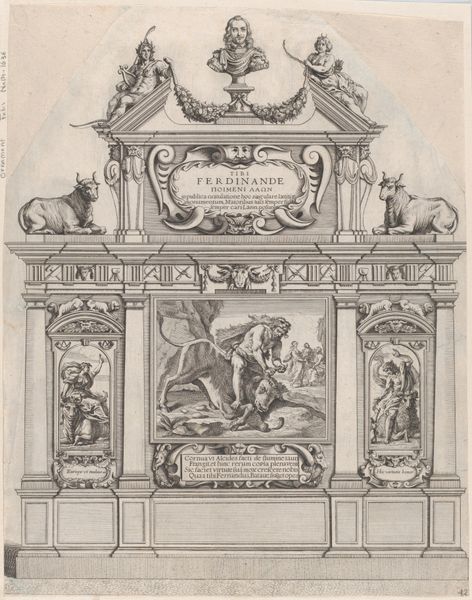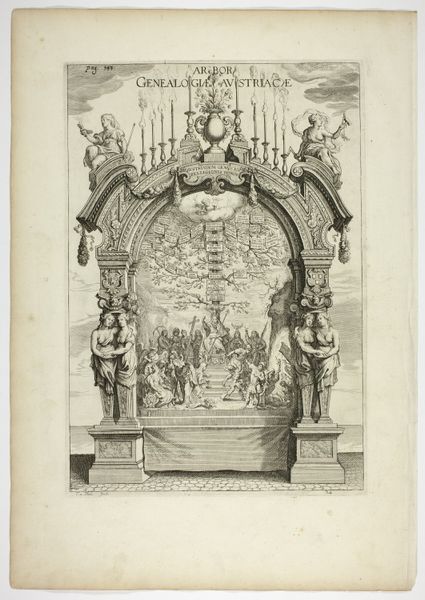
print, engraving
#
portrait
#
statue
#
baroque
# print
#
old engraving style
#
history-painting
#
engraving
Dimensions: height 430 mm, width 289 mm
Copyright: Rijks Museum: Open Domain
Editor: This engraving by Thomas de Leu, created in 1596, is titled "Monument voor Hendrik IV, koning van Frankrijk en Navarra," or "Monument to Henry IV, King of France and Navarre." It strikes me as very formally composed, almost like an architectural elevation. What do you see in this piece? Curator: I see a carefully constructed image deeply embedded in the power dynamics of its time. Consider Henry IV's reign—marked by religious conflict and political maneuvering. This print, likely commissioned, serves as propaganda, constructing a specific narrative around his image and legacy. The Baroque style itself, with its emphasis on grandeur and emotional impact, was often used to assert authority. Editor: So the artistic choices were made to portray a particular message? Curator: Exactly. Think about the historical context: Henry IV issuing the Edict of Nantes, attempting to reconcile Catholics and Protestants. This monument, in print form, circulates his image, projecting strength and legitimacy, and arguably attempting to rewrite a history marked by religious persecution and civil unrest. Notice how he’s framed by allegorical figures; are they celebrating true unity or reinforcing a victor's narrative? Editor: That makes me think about the perspective of those excluded from that narrative. Who wasn't represented in this "unity"? Curator: Precisely! Consider the Huguenots, the Catholic League... their voices are conspicuously absent. And how might this idealized image of kingship be perceived by those who bore the brunt of royal policies, the peasantry for example? These are essential questions to ask. Editor: I never considered the engraving as being a tool for political message-making, but now it seems obvious! Curator: Art is rarely neutral. Engaging with its history allows us to decipher those hidden meanings and challenge the power structures they often uphold. It is important to remember history has multiple view points.
Comments
No comments
Be the first to comment and join the conversation on the ultimate creative platform.

